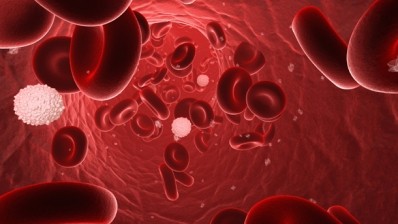Energy and endurance: the ketone kings

- The benefits of a ketogenic diet
- Studies that back up the theory
- A mixed approach to sports nutrition
- The appeal of low-carb foods to a wider market
Those looking to improve their performance in endurance sports are bucking conventional wisdom and increasingly taking a low-carb approach in preparing for events such as cycling and long-distance running.
It’s a trend that’s catching on with ‘weekend warriors’ and elite endurance athletes alike, and the science is increasingly there to support a diet with few carbs, at least some of the time, during training.
Known as a ketogenic diet (derived from water-soluble molecules known as ketones), the aim is to make the body adapt to burn fats, rather than carbs, as its primary source of energy.
And, from the perspective of a food producer, targeting low-carb products at endurance athletes during training is starting to look like an increasingly healthy prospect.
The benefits of a ketogenic diet (return to top)
The evidence varies over precisely how long athletes need to be on a ketogenic diet before they feel any benefit, but it appears to take around two to four weeks to adapt.
“According to our knowledge, it takes from 10 to 14 days to generate significant adaptive changes in enzymes responsible for fat metabolism.
“These changes persist from several days, up to two to three weeks,” says Professor Adam Zajac from the Department of Sports Training at the Academy of Physical Education in Katowice, Poland.
Zajac and his team have published several studies investigating the effects of a ketogenic diet on endurance athletes such as off-road cyclists.
The resulting metabolic changes are complex but, in essence, the researchers found that the athletes became adapted to using free fatty acids (FFAs) as their primary fuel source, rather than glycogen – the form in which carbohydrate-derived energy is stored in muscles.
In prolonged endurance events, the hypothesis is that competitors trained on a low-carb regime use FFAs first, and only start to deplete their precious glycogen stores much later in the race, thereby delaying or preventing a collision with ‘the wall’ – the point at which sudden fatigue and loss of energy set in.
For this to translate into an improved performance, the glycogen stores must be ‘topped up’ before the actual event, so Zajac suggests that the ketogenic diet should be abandoned in favour of carb-loading for two days before the main event.
“The ketogenic diet has two objectives,” he explains. “First of all, to deplete muscle cells from glycogen, and [second] to activate lipolysis. This takes several days if long endurance aerobic efforts accompany the diet.
“The two-day carbohydrate loading quickly increases glycogen stores, which can be used in later parts of a distance race … Numerous researchers have confirmed that, despite the replenished glycogen stores, the two to three weeks of high-fat diet causes adaptive changes at the cellular level, which allow for an increased FFA metabolism during exercise of low to moderate intensity.”
Studies that back up the theory (return to top)
Several studies back up this idea that athletes can train their metabolisms to burn fat first during low- to moderate-intensity workouts.
Long-term low-carb proponent Professor Jeff Volek, of the Department of Human Sciences at The Ohio State University, published the results of a study last year that showed elite ultra-runners on a ketogenic diet achieved the highest fat-burning rates ever recorded by researchers. The study was published in the online journal Metabolism: Clinical and Experimental.
On average, the low-carb runners’ peak fat-burning rate was 2.3-times higher than the rate for high-carb athletes – 1.5 versus 0.67 grams per minute.
In a further experiment involving an endurance run, Volek’s team found that the average contribution of fat during exercise in the low-carb and high-carb groups was 88% and 56% respectively.
“In the fat-adapted state, glycogen use is no doubt significantly reduced. Humans did not evolve to store much carbohydrate, so arguably, it is not the preferred substrate to fuel exercise as so many experts claim,” says Volek.
But there’s a good reason that work on low-carb training tends to focus on endurance sports. Much of the current evidence indicates that athletes on a ketogenic regime can struggle to maintain peak performance during extremely intensive exercise.
One probable reason is that the rate of energy release when oxidising fats (measured as the rate of generation of the adenosine triphosphate (ATP) molecule) is less than that of muscle glycogen.
Zajac explains that “[FFAs] are a preferred source of energy for long distance aerobic efforts but not for more intensive, speed or speed endurance efforts lasting from several seconds to several minutes”.
His team has found that when FFAs are oxidised, around 0.40 moles per minute of ATP is re-synthesised, compared with between one and two moles per minute of ATP when muscle glycogen is the substrate.
A mixed approach to sports nutrition (return to top)
The mixed impact of ketogenic diets on performance leads many experts to advocate a similarly mixed approach to sports nutrition.
“When a high-carbohydrate diet is followed, fat oxidation is suppressed a lot of the time and fat metabolism may not be as developed as when a low-carbohydrate diet is followed.
“The reverse is also true. When a low carbohydrate diet is followed, the body’s ability to use carbohydrate as a fuel is diminished,” says Asker Jeukendrup, professor at the University of Loughborough and sports science blogger via the mysportscience.com site.
“In turn, this can have detrimental effects on high-intensity exercise, where carbohydrate is the primary fuel,” he explains.
Jeukendrup’s suggestion is to abandon the idea that one diet is significantly better than another. The composition of a diet should depend on the goals of the athlete, the goal of a workout, and the individual’s makeup, he believes.
“Sometimes an athlete may want to ‘train low’ [have a low-carbohydrate diet while training] to make sure fat metabolism gets challenged and, ultimately, optimised.
“Other days, an athlete may want to train high-intensity, focus more on quality or train the body’s capacity to absorb carbohydrate. Those days there should be a focus on carbohydrate, before and during training,” he says.
The appeal of low-carb foods to a wider market (return to top)
In addition to elite athletes, low-carb consumers increasingly include fitness enthusiasts, as well as relatively sedentary people trying to lose weight and stave off health problems such as diabetes.
“The FASTER [Fat Adapted Substrate use in Trained Elite Runners] study, and many other studies we have conducted, provide compelling evidence that the health benefits associated with a ketogenic diet would be relevant for recreational athletes seeking improved body composition and metabolic health,” says Volek.
“Eating a lot of carbs cancels out many of the beneficial effects of exercise, especially for people who are insulin-resistant.”
In line with the potential health benefits, the appeal of low-carb foods also extends beyond both elite athletes and fitness enthusiasts, and into the mass market.
According to Mintel, 22% of British consumers say they typically limit their intake of carbohydrates. Rates are even higher elsewhere in Europe, with 34% of people in Italy, 32% France, and 26% in Germany all claiming to take the lower-carb route.
Mintel also says that the food industry is responding, with a 204% increase in the number of food and drink products launched in Europe carrying a low-carbohydrate claim between 2011 and 2015.
However, Zajac cautions that low-carb/high-fat products are unlikely to supplant high-carb gels and bars for use during a competitive event.
“I don’t think high-carb bars or gels will be replaced by fat supplements during exercise [since] immediate energy is best supplied by carbohydrate fluids, as during dehydration solid foods are poorly absorbed,” he says.
Despite this, there are clear opportunities for food producers to fulfil the needs of a growing number of people who want to reduce their carb intake. It looks like the ketone kings are here to stay.















